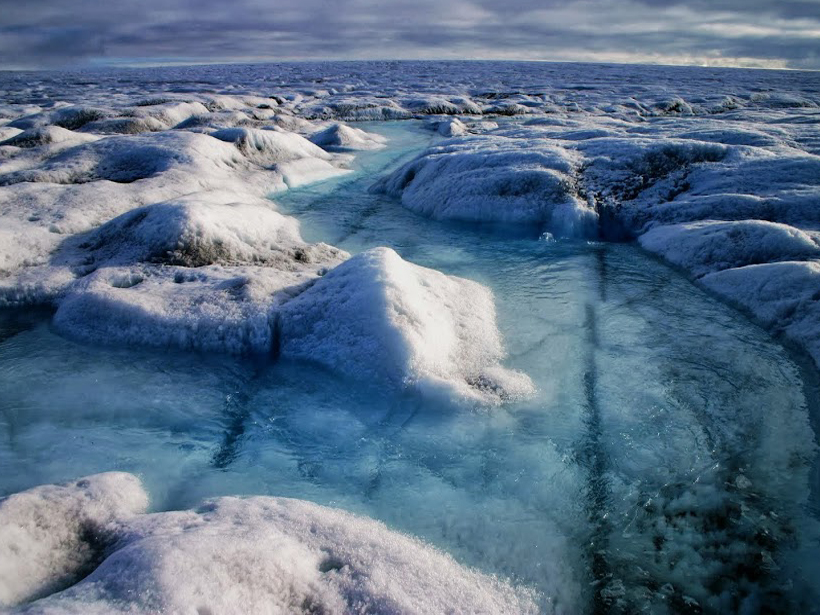Source: Earth’s Future
The melting of glaciers is one of the most dramatic and palpable symptoms of climate change. Roughly half of the total sea level rise between 1993 and 2007—approximately 46 millimeters—can be attributed to terrestrial ice melting or calving into the sea.
In a recent study, Colgan et al. use a mathematical model to predict how much ice will be lost from Greenland over the next 500 years and the amount of sea level rise expected as a result due to a mechanism they call “thermal-viscous collapse.” The authors’ model focuses on increasing ice temperatures and resulting changes in ice viscosity. These variables are closely related: As ice heats up, its viscosity decreases, resulting in faster flow and iceberg production.
Using an ensemble of 50 computer simulations, the team predicts that within 500 years a thermal-viscous collapse could begin to warm the deepest portions of the ice sheet to their melting point. According to the authors, a thermal-viscous collapse occurs when ice that is significantly colder than the freezing temperature—as it is in most of Greenland today—warms to the melting point.
Counterintuitively, such a collapse could be caused by meltwater refreezing within the ice sheet. One gram of water releases 335 joules of energy when it transitions from liquid to solid, and over time, that energy can raise the average temperature of Greenland glaciers. The authors calculate that 1 kilogram of refreezing meltwater releases enough energy to decrease the viscosity of 100 kilograms of ice by 11%. When this enhanced ice flow is extrapolated to the entire ice sheet, the calculations reveal that Greenland could lose 5% ± 2% of its ice by 2500. According to the models, that loss could translate to a cumulative sea level rise contribution of 33 ± 18 centimeters.
The authors are careful to point out that their model represents an analysis of only one mechanism and one possible future and that they did not account for factors that might prevent the thermal-viscous collapse. There may be feedback loops or other mechanisms associated with ice loss that could stabilize the ice sheet and prevent thermal-viscous collapse from occurring. However, the study indicates that such an event appears both thermodynamically and thermomechanically possible within the next few hundred years. (Earth’s Future, doi:10.1002/2015EF000301, 2015)
—David Shultz, Freelance Writer
Citation: Shultz, D. (2015), Sea level rise due to warming, weakening of Greenland glaciers, Eos, 96, doi:10.1029/2015EO038877. Published on 9 November 2015.
Text © 2015. The authors. CC BY-NC 3.0
Except where otherwise noted, images are subject to copyright. Any reuse without express permission from the copyright owner is prohibited.

